-

Er,Cr:YAG–2940nm lasermeditsiinisüsteemi vardad
- Meditsiinivaldkonnad: sealhulgas hambaravi ja nahahooldus
- Materjali töötlemine
- Lidar
-
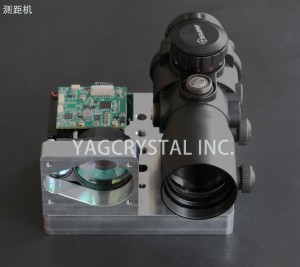
Er: klaasist laserkaugusmõõtur XY-1535-04
Rakendused:
- Airbore FCS (tulejuhtimissüsteemid)
- Sihtmärkide jälgimissüsteemid ja õhutõrjesüsteemid
- Mitme sensoriga platvormid
- Üldiselt liikuvate objektide asukoha määramise rakenduste jaoks
-

Suurepärane soojust hajutav materjal – CVD
CVD Diamond on eriline aine, millel on erakordsed füüsikalised ja keemilised omadused. Selle äärmuslik jõudlus on võrreldamatu ühegi teise materjaliga.
-
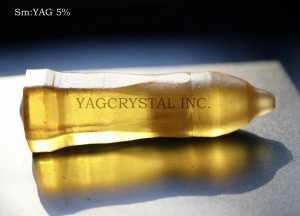
Sm:YAG – suurepärane ASE inhibeerimine
LaserkristallSm:YAGkoosneb haruldaste muldmetallide elementidest ütriumist (Y) ja samariumist (Sm), samuti alumiiniumist (Al) ja hapnikust (O). Selliste kristallide valmistamise protsess hõlmab materjalide ettevalmistamist ja kristallide kasvatamist. Esiteks valmistage materjalid ette. See segu asetatakse seejärel kõrge temperatuuriga ahju ja paagutatakse kindlatel temperatuuri- ja atmosfääritingimustel. Lõpuks saadi soovitud Sm:YAG kristall.
-
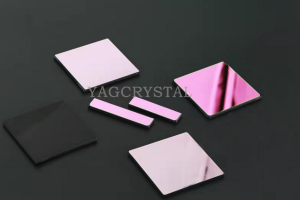
Kitsaribafilter – jagatud ribapääsfiltrist
Nn kitsaribafilter on jagatud ribapääsfiltrist ja selle definitsioon on sama, mis ribapääsfiltril, st filter laseb optilist signaali läbida kindlas lainepikkuses, ja kaldub ribapääsfiltrist kõrvale. Mõlema poole optilised signaalid on blokeeritud ja kitsaribafiltri pääsuriba on suhteliselt kitsas, üldiselt vähem kui 5% lainepikkuse keskväärtusest.
-

Nd: YAG – suurepärane tahke lasermaterjal
Nd YAG on kristall, mida kasutatakse tahkislaserite laserikandjana. Dopant, kolmekordselt ioniseeritud neodüüm, Nd(lll), asendab tavaliselt väikese osa ütriumalumiiniumgranaadist, kuna need kaks iooni on sarnase suurusega. Neodüümiioon tagab kristalli laseriaktiivsuse samal viisil. punase kroomiioonina rubiinlaserites.
-
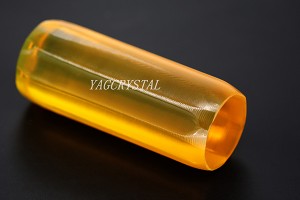
1064 nm laserkristall veevaba jahutamiseks ja miniatuursete lasersüsteemide jaoks
Nd:Ce:YAG on suurepärane lasermaterjal, mida kasutatakse veevaba jahutamiseks ja miniatuursete lasersüsteemide jaoks. Nd,Ce: YAG laservardad on kõige ideaalsemad töömaterjalid madala kordussagedusega õhkjahutusega laserite jaoks.
-
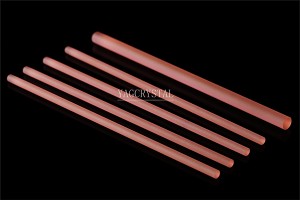
Er: YAG – suurepärane 2,94 um laserkristall
Erbium:ütrium-alumiinium-granaat (Er:YAG) laseriga nahapinna taastamine on tõhus meetod minimaalselt invasiivseks ja tõhusaks mitmete nahahaiguste ja kahjustuste raviks. Selle peamised näidustused hõlmavad fotovananemise, rütmihäirete ning üksikute hea- ja pahaloomuliste nahakahjustuste ravi.
-
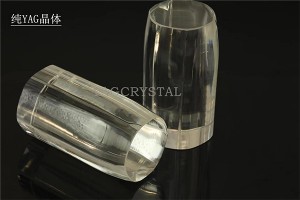
Pure YAG – suurepärane materjal UV-IR optiliste akende jaoks
Legeerimata YAG Crystal on suurepärane materjal UV-IR optiliste akende jaoks, eriti kõrge temperatuuri ja suure energiatihedusega rakendustes. Mehaaniline ja keemiline stabiilsus on võrreldav safiirkristalliga, kuid YAG on ainulaadne, kuna see ei tekita kaksikmurdmist ning on saadaval kõrgema optilise homogeensuse ja pinnakvaliteediga.
-
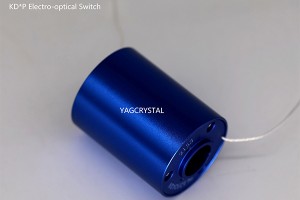
KD*P kasutatakse Nd:YAG laseri kahekordistamiseks, kolmekordistamiseks ja neljakordistamiseks
KDP ja KD*P on mittelineaarsed optilised materjalid, mida iseloomustavad kõrge kahjustuslävi, head mittelineaarsed optilised koefitsiendid ja elektrooptilised koefitsiendid. Seda saab kasutada toatemperatuuril Nd:YAG laseri ja elektrooptiliste modulaatorite kahe-, kolme- ja neljakordseks suurendamiseks.
-
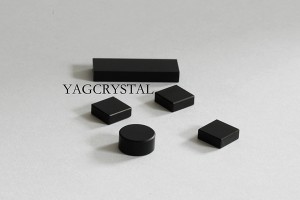
Cr4+:YAG – ideaalne materjal passiivseks Q-lülitamiseks
Cr4+:YAG on ideaalne materjal Nd:YAG ja teiste Nd ja Yb legeeritud laserite passiivseks Q-lülitamiseks lainepikkuste vahemikus 0,8–1,2 um. See on suurepärane stabiilsus ja töökindlus, pikk kasutusiga ja kõrge kahjustuslävi.Cr4+: YAG-kristallidel on mitmeid eeliseid võrreldes traditsiooniliste passiivse Q-lülitusvalikutega, nagu orgaanilised värvained ja värvikeskuste materjalid.
-

Ho, Cr, Tm: YAG – kroomi, tuuliumi ja holmiumi ioonidega legeeritud
Ho, Cr, Tm: YAG-ütrium-alumiinium-granaat-laserkristallid, mis on legeeritud kroomi, tuuliumi ja holmiumi ioonidega, et tagada laseriga 2,13 mikronit, leiavad üha enam rakendusi, eriti meditsiinitööstuses.
-
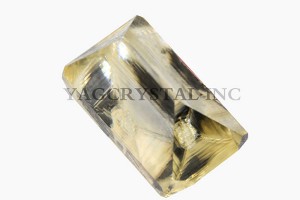
KTP – Nd:yag laserite ja muude Nd-legeeritud laserite sageduse kahekordistamine
KTP-l on kõrge optiline kvaliteet, lai läbipaistev ulatus, suhteliselt kõrge efektiivne SHG koefitsient (umbes 3 korda kõrgem kui KDP-l), üsna kõrge optilise kahjustuse künnis, lai vastuvõtunurk, väike eemaldus ning I ja II tüüpi mittekriitiline faas -sobitamine (NCPM) laias lainepikkuste vahemikus.
-
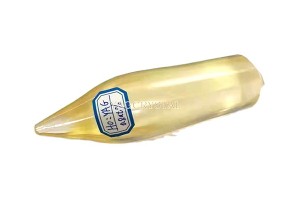
Ho:YAG – tõhus vahend 2,1 μm laserkiirguse tekitamiseks
Uute laserite pideva ilmumisega hakatakse lasertehnoloogiat laialdasemalt kasutama erinevates oftalmoloogia valdkondades. Samal ajal kui PRK-ga lühinägelikkuse ravi uuringud on järk-järgult jõudmas kliinilise rakendusetappi, tehakse aktiivselt ka hüperoopilise refraktsioonihäire ravi uuringuid.
-
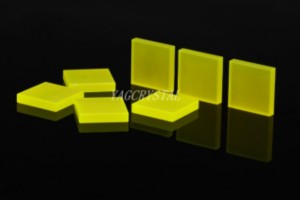
Ce:YAG – oluline stsintillatsioonikristall
Ce:YAG monokristall on suurepäraste kõikehõlmavate omadustega kiiresti lagunev stsintillatsioonimaterjal, millel on suur valgusvõimsus (20000 footoni/MeV), kiire valguse sumbumine (~70ns), suurepärased termomehaanilised omadused ja valguse tipplainepikkus (540nm). sobitatud tavalise fotokordisti toru (PMT) ja ränifotodioodi (PD) vastuvõtva tundliku lainepikkusega, hea valgusimpulss eristab gammakiirgust ja alfaosakesi, Ce:YAG sobib alfaosakeste, elektronide ja beetakiirte jms tuvastamiseks. laetud osakeste, eriti Ce:YAG monokristalli omadused võimaldavad valmistada õhukesi kilesid paksusega alla 30 um. Ce:YAG stsintillatsioonidetektoreid kasutatakse laialdaselt elektronmikroskoopias, beeta- ja röntgeniloenduses, elektronide ja röntgenikiirguse kuvamisekraanides ning muudes valdkondades.
-
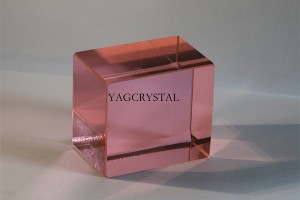
Er: Klaas – pumbatakse 1535 Nm laserdioodidega
Erbiumi ja ütterbiumiga koos legeeritud fosfaatklaasil on suurepäraste omaduste tõttu lai kasutusala. Enamasti on see parim klaasmaterjal 1,54 μm laseri jaoks tänu oma silmadele ohutule lainepikkusele 1540 nm ja suurele atmosfääri läbilaskvusele.
-

Nd:YVO4 – dioodpumbaga tahkislaserid
Nd: YVO4 on üks kõige tõhusamaid laser-peremeeskristalle, mis praegu dioodlaseriga pumbatavate tahkislaserite jaoks on olemas. Nd:YVO4 on suurepärane kristall suure võimsusega, stabiilsete ja kulutõhusate dioodpumbaga tahkislaserite jaoks.
-
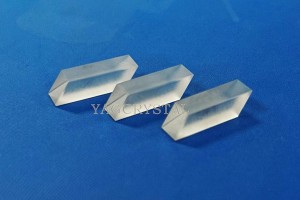
Nd:YLF – Nd-legeeritud liitiumütriumfluoriid
Nd:YLF kristall on pärast Nd:YAG-i veel üks väga oluline kristalllaseriga töömaterjal. YLF-i kristallmaatriksil on lühike UV-kiirguse neeldumise piirlainepikkus, lai valik valguse läbilaskvusribasid, negatiivne murdumisnäitaja temperatuuritegur ja väike termilise läätse efekt. Rakk sobib mitmesuguste haruldaste muldmetallide ioonide dopinguks ja suudab realiseerida suure hulga lainepikkuste, eriti ultraviolettkiirguse, laservõnkumist. Nd: YLF kristallil on lai neeldumisspekter, pikk fluorestsentsi eluiga ja väljundi polarisatsioon, mis sobib LD pumpamiseks ning seda kasutatakse laialdaselt impulss- ja pidevlaserites erinevates töörežiimides, eriti üherežiimilises väljundis, Q-lülitusega ülilühikeste impulsslaserites. Nd: YLF-kristall-p-polariseeritud 1,053 mm laser ja fosfaatneodüümklaasist 1,054 mm laseri lainepikkus sobivad kokku, seega on see ideaalne töömaterjal neodüümklaasist laseri tuumakatastroofisüsteemi ostsillaatori jaoks.
-

Er,YB:YAB-Er, Yb Co – legeeritud fosfaatklaas
Er, Yb kaaslegeeritud fosfaatklaas on hästi tuntud ja laialt kasutatav aktiivne keskkond laserite jaoks, mis kiirgavad "silmale ohutu" vahemikus 1,5–1,6 um. Pikk kasutusiga 4 I 13/2 energiataseme juures. Kui Er, Yb kaaslegeeritud ütriumalumiiniumboraadi (Er, Yb: YAB) kristalle kasutatakse tavaliselt Er, Yb: fosfaatklaasi aseaineid, saab neid kasutada "silmale ohutute" aktiivsete kesklaseritena pidevlaine ja suurema keskmise väljundvõimsusega. impulsi režiimis.
-
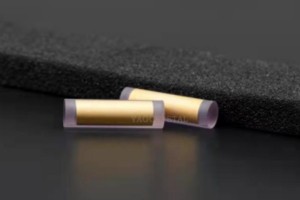
Kullatud kristallsilinder – kullatud ja vaskplaat
Praegu kasutatakse plaatlaserkristallmooduli pakendis peamiselt indiumi või kuld-tina sulami madala temperatuuriga keevitusmeetodit. Kristall pannakse kokku ja seejärel pannakse kokkupandud lati laserkristall kuumutamise ja keevitamise lõpuleviimiseks vaakumkeevitusahju.
-
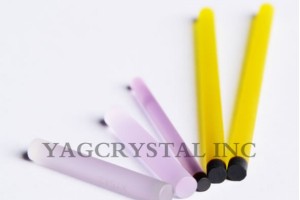
Kristallide liimimine – laserkristallide komposiittehnoloogia
Kristallide sidumine on laserkristallide komposiittehnoloogia. Kuna enamikul optilistel kristallidel on kõrge sulamistemperatuur, on tavaliselt vaja kõrgel temperatuuril kuumtöötlust, et soodustada kahe täpse optilise töötluse läbinud kristalli pinnal olevate molekulide vastastikust difusiooni ja sulandumist ning lõpuks stabiilsema keemilise sideme moodustamiseks. , et saavutada tõeline kombinatsioon, seetõttu nimetatakse kristallide sidumise tehnoloogiat ka difusioonsidetehnoloogiaks (või termilise sidumise tehnoloogiaks).
-

Yb: YAG – 1030 Nm laserkristall, paljulubav laseraktiivne materjal
Yb:YAG on üks paljutõotavamaid laseraktiivseid materjale ja sobib paremini dioodiga pumpamiseks kui traditsioonilised Nd-legeeritud süsteemid. Võrreldes tavaliselt kasutatava Nd:YAG crsytaliga, on Yb:YAG kristallil palju suurem neeldumisriba, et vähendada dioodlaserite soojusjuhtimise nõudeid, pikem ülemise laseri taseme eluiga, kolm kuni neli korda väiksem soojuskoormus pumba võimsusühiku kohta.
-
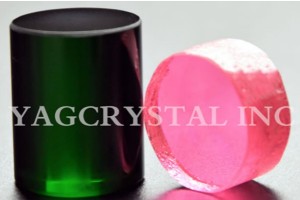
Er,Cr YSGG pakub tõhusat laserkristalli
Erinevate ravivõimaluste tõttu on dentiini ülitundlikkus (DH) valulik haigus ja kliiniline väljakutse. Potentsiaalse lahendusena on uuritud suure intensiivsusega lasereid. Selle kliinilise uuringu eesmärk oli uurida Er:YAG ja Er,Cr:YSGG laserite mõju DH-le. See oli randomiseeritud, kontrollitud ja topeltpime. Uuringurühma 28 osalejat täitsid kõik kaasamise nõuded. Tundlikkust mõõdeti visuaalse analoogskaalaga enne ravi alustamist, vahetult enne ja pärast ravi, samuti üks nädal ja üks kuu pärast ravi.
-
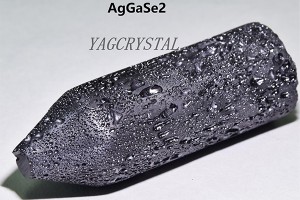
AgGaSe2 kristallid – riba servad 0,73 ja 18 µm juures
AGSe2 AgGaSe2(AgGa(1-x)InxSe2) kristallidel on riba servad 0,73 ja 18 µm juures. Selle kasulik edastusulatus (0,9–16 µm) ja lai faaside sobitamise võimalus pakuvad suurepärast potentsiaali OPO rakenduste jaoks, kui seda pumbatakse mitmesuguste erinevate laseritega.
-
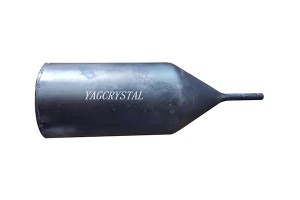
ZnGeP2 – küllastunud infrapuna mittelineaarne optika
Tänu suurtele mittelineaarsetele koefitsientidele (d36=75 pm/V), laiale infrapuna läbipaistvuse vahemikule (0,75–12 μm), kõrgele soojusjuhtivusele (0,35 W/(cm·K)), kõrgele laserkahjustuse lävele (2–5 J/cm2) ja hästi töödeldav omadus, nimetati ZnGeP2 infrapuna mittelineaarse optika kuningaks ja see on endiselt parim sagedusmuunduri materjal suure võimsusega häälestatava infrapunalaseri genereerimiseks.
-

AgGaS2 - mittelineaarsed optilised infrapunakristallid
AGS on läbipaistev vahemikus 0,53 kuni 12 µm. Kuigi selle mittelineaarne optiline koefitsient on nimetatud infrapunakristallide hulgas madalaim, kasutatakse Nd:YAG laseriga pumbatavates OPO-des kõrget lühikese lainepikkusega läbipaistvust 550 nm juures; arvukates erinevuste sageduse segamise katsetes diood-, Ti:Sapphire-, Nd:YAG- ja IR-värvilaseritega, mis katavad vahemikku 3–12 µm; otseste infrapuna vastumeetmete süsteemides ja CO2 laseri SHG jaoks.
-

BBO kristall – beeta-baariumboraatkristall
BBO-kristall mittelineaarses optilises kristallis on omamoodi kõikehõlmav eelis, hea kristall, sellel on väga lai valgusvahemik, väga madal neeldumistegur, nõrk piesoelektriline helinaefekt, võrreldes teiste elektrovalguse modulatsioonikristallidega, on kõrgem ekstinktsioonisuhe, suurem sobivus Nurk, kõrge valguskahjustuse lävi, lairiba temperatuuri sobitamine ja suurepärane optiline ühtlus on kasulikud laseri väljundvõimsuse stabiilsuse parandamiseks, eriti Nd puhul: YAG-laseri kolmekordne sagedus on laialdaselt kasutusel.
-
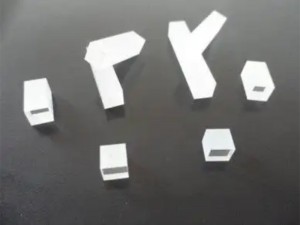
LBO kõrge mittelineaarse sidestuse ja kõrge kahjustuslävega
LBO kristall on suurepärase kvaliteediga mittelineaarne kristallmaterjal, mida kasutatakse laialdaselt tahkislaseri, elektrooptika, meditsiini ja nii edasi uurimis- ja rakendusvaldkondades. Samal ajal on suuremõõtmelistel LBO-kristallidel lai kasutusvõimalus laserisotoopide eraldamise inverteris, laseriga juhitavas polümerisatsioonisüsteemis ja muudes valdkondades.
-
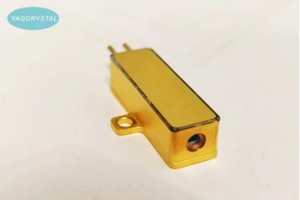
100uJ Erbium klaasist mikrolaser
Seda laserit kasutatakse peamiselt mittemetalliliste materjalide lõikamiseks ja märgistamiseks. Selle lainepikkuse vahemik on laiem ja võib katta nähtava valguse vahemikku, nii et saab töödelda rohkem erinevaid materjale ja efekt on ideaalsem.
-
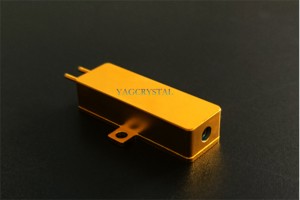
200uJ Erbium klaasist mikrolaser
Erbiumklaasist mikrolaseritel on lasersuhtluses olulised rakendused. Erbiumklaasist mikrolaserid võivad tekitada laservalgust lainepikkusega 1,5 mikronit, mis on optilise kiu ülekandeaken, seega on sellel kõrge ülekandetõhusus ja ülekandekaugus.
-
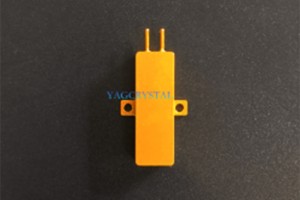
300uJ Erbium klaasist mikrolaser
Erbiumklaasist mikrolaserid ja pooljuhtlaserid on kahte erinevat tüüpi lasereid ning nendevahelised erinevused kajastuvad peamiselt tööpõhimõttes, kasutusvaldkonnas ja jõudluses.
-
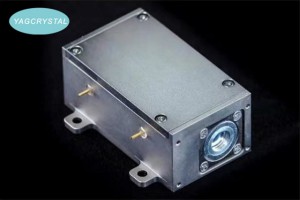
2mJ Erbium Glass Microlaser
Erbium-klaaslaseri väljatöötamisega on see praegu oluline mikrolaseri tüüp, millel on erinevates valdkondades erinevad rakenduse eelised.
-
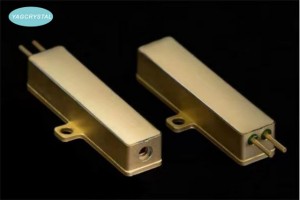
500uJ Erbium klaasist mikrolaser
Erbiumklaasist mikrolaser on väga oluline laseriliik ja selle arengulugu on läbinud mitu etappi.
-
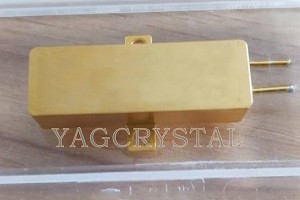
Erbium Glass Micro laser
Viimastel aastatel on nõudluse järkjärgulise kasvuga keskmise ja pika vahemaa silmadele ohutute laserkaugusmõõtmisseadmete järele kerkinud kõrgemad nõuded peibutusklaaslaserite näitajatele, eriti probleem on see, et mJ-taseme masstootmine. suure energiatarbega tooteid ei saa praegu Hiinas realiseerida. , ootab lahendamist.
-
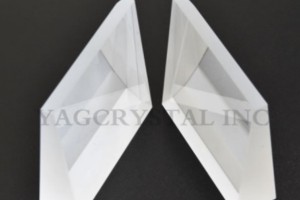
Kiilprismad on kaldpinnaga optilised prismad
Kiilupeegli optilise kiilunurga funktsioonide üksikasjalik kirjeldus:
Kiilprismad (tuntud ka kui kiilprismad) on kaldpindadega optilised prismad, mida kasutatakse peamiselt optilises väljas valgusvihu juhtimiseks ja nihutamiseks. Kiilprisma kahe külje kaldenurgad on suhteliselt väikesed. -
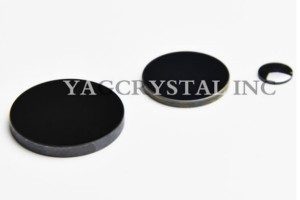
Ze Windows – pikalaineliste läbipääsufiltritena
Germaaniumi materjali laia valguse läbilaskevahemikku ja valguse läbipaistmatust nähtava valguse ribas saab kasutada ka pikalaineliste läbilaskefiltritena lainete puhul, mille lainepikkus on suurem kui 2 µm. Lisaks on germaanium inertne õhu, vee, leeliste ja paljude hapete suhtes. Germaaniumi valgust läbilaskvad omadused on äärmiselt tundlikud temperatuuri suhtes; tegelikult muutub germaanium 100 °C juures nii imavaks, et on peaaegu läbipaistmatu ja 200 °C juures täiesti läbipaistmatu.
-
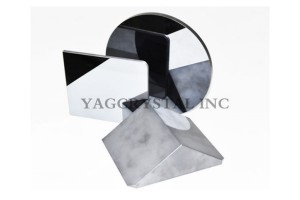
Si Windows – madala tihedusega (selle tihedus on pool germaaniumi materjalist)
Silikoonaknad võib jagada kahte tüüpi: kaetud ja katmata ning töödeldakse vastavalt kliendi nõudmistele. See sobib lähi-infrapunaribadele 1,2–8 μm piirkonnas. Kuna ränimaterjalil on madala tihedusega omadused (selle tihedus on poole suurem kui germaaniummaterjalil või tsinkseleniidmaterjalil), sobib see eriti hästi teatud juhtudel, mis on tundlikud kaalunõuetele, eriti 3–5 um riba puhul. Räni kõvadus Knoop on 1150, mis on kõvem kui germaanium ja vähem rabe kui germaanium. Kuid tänu oma tugevale neeldumisribale 9 um juures ei sobi see CO2 laserülekande rakenduste jaoks.
-
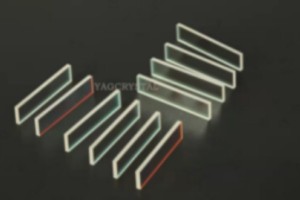
Sapphire Windows – head optilise ülekande omadused
Safiirakendel on head optilised läbilaskvusomadused, kõrged mehaanilised omadused ja kõrge temperatuuritaluvus. Need sobivad väga hästi safiir-optiliste akende jaoks ja safiiraknad on muutunud optiliste akende tipptoodeteks.
-
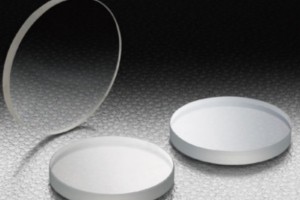
CaF2 aknad – valguse edastusjõudlus ultraviolettkiirgusest 135 nm ~ 9 um
Kaltsiumfluoriidil on lai kasutusala. Optilise jõudluse seisukohast on sellel väga hea valguse läbilaskvus ultraviolettkiirgusest 135nm ~ 9um.
-
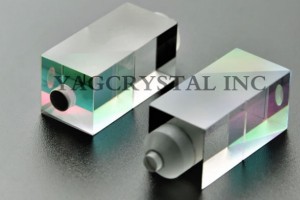
Prismad liimitud – tavaliselt kasutatav läätsede liimimismeetod
Optiliste prismade liimimisel kasutatakse peamiselt optikatööstuse standardliimi (värvitu ja läbipaistev, läbilaskvusega üle 90% etteantud optilises vahemikus). Optiline sidumine optilistel klaaspindadel. Laialdaselt kasutatav läätsede, prismade, peeglite ja optiliste kiudude ühendamiseks sõjalises, kosmose- ja tööstusoptikas. Vastab optiliste sidematerjalide MIL-A-3920 sõjaväestandardile.
-

Silindrilised peeglid – ainulaadsed optilised omadused
Silindrilisi peegleid kasutatakse peamiselt kujutise suuruse disaininõuete muutmiseks. Näiteks teisendage punktipunkt joonepunktiks või muutke pildi kõrgust ilma pildi laiust muutmata. Silindrilistel peeglitel on ainulaadsed optilised omadused. Kõrgtehnoloogia kiire arenguga kasutatakse silindrilisi peegleid üha laiemalt.
-
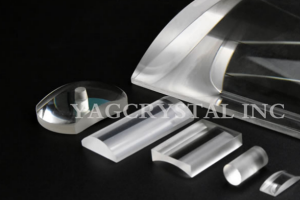
Optilised läätsed – kumerad ja nõgusad läätsed
Optiline õhuke lääts – lääts, mille keskosa paksus on suur võrreldes selle kahe külje kõverusraadiustega.
-
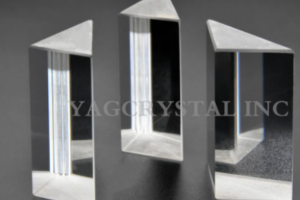
Prisma – kasutatakse valguskiirte jagamiseks või hajutamiseks.
Valguskiirte jagamiseks või hajutamiseks kasutatakse prismat, läbipaistvat objekti, mida ümbritseb kaks ristuvat tasapinda, mis ei ole üksteisega paralleelsed. Prismad võib nende omaduste ja kasutusalade järgi jagada võrdkülgseteks kolmnurkprismadeks, ristkülikukujulisteks ja viisnurkseteks prismadeks ning neid kasutatakse sageli digitaalseadmetes, teaduses ja tehnoloogias ning meditsiiniseadmetes.
-
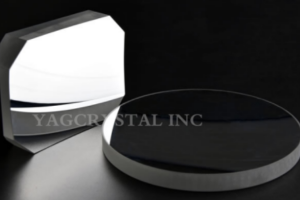
Peegeldavad peeglid – mis töötavad peegeldusseadusi kasutades
Peegel on optiline komponent, mis töötab peegeldusseadusi kasutades. Peeglid saab nende kuju järgi jagada tasapinnalisteks peegliteks, sfäärilisteks peegliteks ja asfäärilisteks peegliteks.
-
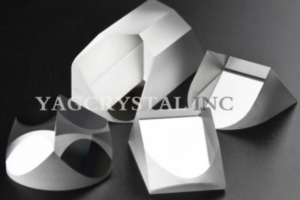
Püramiid – tuntud ka kui püramiid
Püramiid, tuntud ka kui püramiid, on teatud tüüpi kolmemõõtmeline hulktahukas, mis moodustatakse hulknurga igast tipust sirgjooneliste lõikude ühendamisel punktiga, mis asub väljaspool tasapinda, kus see asub. Hulknurka nimetatakse püramiidi põhjaks. . Sõltuvalt põhjapinna kujust on ka püramiidi nimi erinev, olenevalt põhjapinna hulknurksest kujust. Püramiid jne.
-

Fotodetektor laserkauguse ja kiiruse mõõtmiseks
InGaAs materjali spektrivahemik on 900-1700 nm ja korrutusmüra on madalam kui germaaniumi materjalil. Tavaliselt kasutatakse seda heterostruktuuriga dioodide paljunduspiirkonnana. Materjal sobib kiireks kiudoptiliseks sideks ja kaubanduslikud tooted on saavutanud kiiruse 10 Gbit/s või rohkem.
-
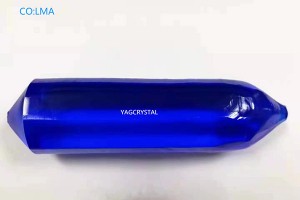
Co2+: MgAl2O4 Uus materjal küllastuva absorbendiga passiivse Q-lüliti jaoks
Co:Spinel on suhteliselt uus materjal küllastuva neelduriga passiivse Q-lülituse jaoks laserites, mis kiirgavad 1,2–1,6 mikronit, eriti silmadele ohutu 1,54 μm Er:klaaslaseri jaoks. Kõrge neelduv ristlõige 3,5 x 10-19 cm2 võimaldab Er:klaaslaseri Q-lülitamist
-
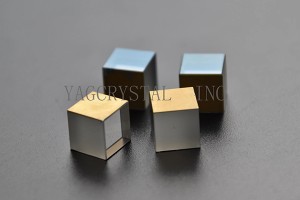
LN-Q Switched Crystal
LiNbO3 kasutatakse laialdaselt elektrooptiliste modulaatoritena ja Q-lülititena Nd:YAG, Nd:YLF ja Ti:Sapphire laserite jaoks, samuti fiiberoptika modulaatoritena. Järgmises tabelis on loetletud tüüpilise LiNbO3 kristalli spetsifikatsioonid, mida kasutatakse ristsuunalise EO modulatsiooniga Q-lülitina.
-
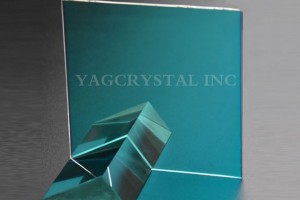
Vaakumkatmine – olemasolev kristallkatmise meetod
Elektroonikatööstuse kiire arenguga muutuvad nõuded täppisoptiliste komponentide töötlemise täpsusele ja pinnakvaliteedile üha kõrgemaks. Optiliste prismade jõudluse integreerimise nõuded muudavad prisma kuju hulknurkseteks ja ebakorrapärasteks. Seetõttu murrab see läbi traditsioonilise töötlemistehnoloogia, on väga oluline töötlemisvoo leidlikum disain.
-
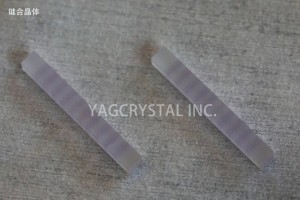
Nd:YAG+YAG一Mitme segmendiga ühendatud laserkristall
Mitmesegmendiline laserkristallide sidumine saavutatakse paljude kristallide segmentide töötlemisega ja seejärel kõrgel temperatuuril termilise sidumisahju asetamisega, et mõlema segmendi vahelised molekulid saaksid üksteisest läbi tungida.

